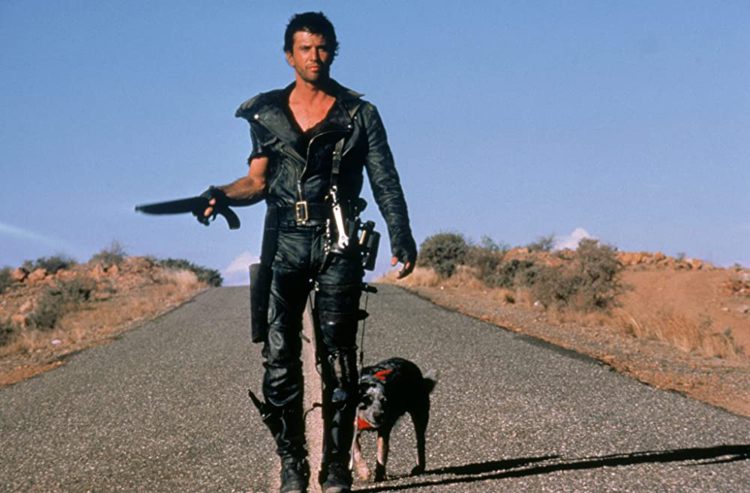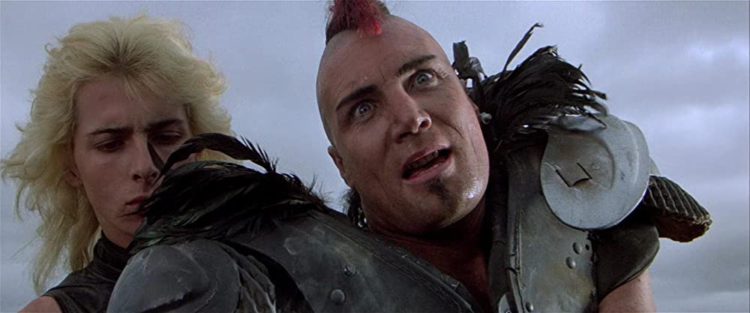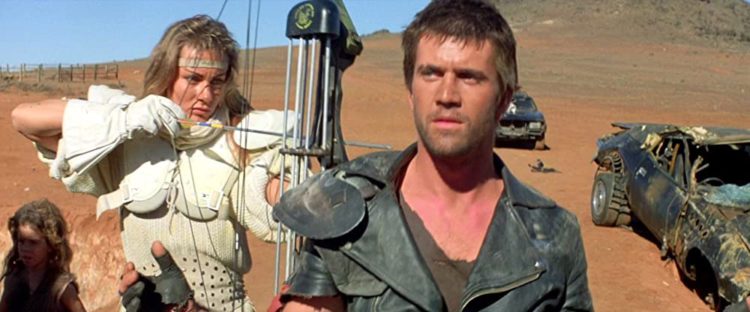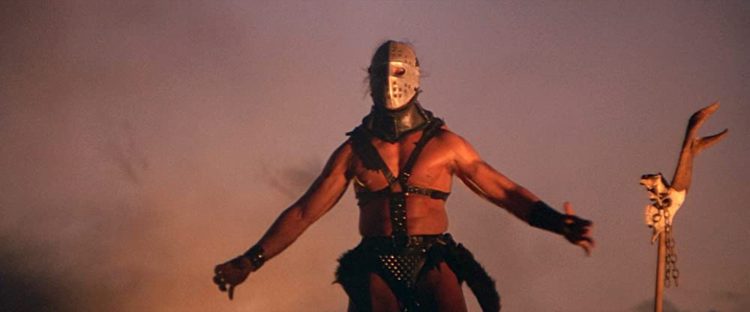Legacy of the Road Warrior | Mad Max 2 at 40
The post-apocalyptic genre is older than you might think. It has its roots in the “Dark Ages” of European history, after the Western Roman Empire had fallen and left its former subjects wandering around the ruins of buildings they could not recreate. A thousand years later writers looked at the fall of the Roman empire and considered that their world, too, must fall. Mary Shelley wrote The Last Man about the struggles of a world devastated by plague, while HG Wells has his protagonist in The Time Machine travel to a future where our civilisation is no more. The dawning of the nuclear age at the end of World War 2 led to a resurgence of the genre, lent an air of spice by the fact that society could be ended by World War 3. As cold war fear began to fade in the 1980s, new worries took its place. The oil crises of 1974 and 1979 made people aware of how fragile some aspects of their society were. It was from this fear that a film which would become the new template for post-apocalyptic fiction was born: Mad Max 2.

The first Mad Max film took place in 1979 and was not a post-apocalyptic film. Instead it was an “if this goes on” five-minutes-into-the-future dystopia. The brainchild of director George Miller and producer Byron Kennedy (who co-wrote the script), it was set in a world of out-of-control gangs, resource shortages, and the crumbling of society. The world has not yet ended, but it’s on the way out. Max Rockatansky, a police officer played by then-unknown Mel Gibson, gets caught in an escalating feud with one of those gangs that ends in the death of his wife and child followed by Max wreaking bloody revenge on the gang. The collapse of his world with the destruction of his family is a mirror of the fragility of society as a whole. The film was an unexpected smash hit, turning a budget of four hundred thousand dollars into a global box office take of millions of dollars. It launched multiple careers as well as a new craze for films combining high speed car chases with dystopian lawlessness. Naturally, it also led to a sequel two years later.
Mad Max 2 establishes both its tone and its setting right out of the gate, with a collage of images showing the collapse of society while a voiceover recounts it as if it was folk history. This sets up a conceit of the Mad Max series that has helped it handle different styles, retcons, and even recasting the main character: the idea that this is not a single unified story but rather that it’s a collection of myths about the same legendary hero. Like Heracles or Fionn Mac Cumhaill, the shape of the character remains the same but the stories vary from teller to teller.

The film itself has a unique mixture of a laconic style with touches of melodrama. Long stretches go by without any dialog at all, punctuated by either emotional over the top speeches or uniquely Australian humour. The action is top notch, of course, and the additional budget is on show in some of the best practical effects of the time. The greatest achievement of the movie is in capturing the feel of its post apocalyptic world – from the repurposed bits and pieces of technology (an armoured schoolbus being used as a compound gate) to the ornamented armour of its raiders. The costumes designed by Norma Moriceau blend repurposed sporting equipment with tribal-style ornamentation and scavenged trinkets. The feathers on the shoulders of lead raider Vez, the sinister hockey mask of Lord Humungus, and the badge-festooned fur clothes of “the Toadie”: each of these speaks to the character of the men and the individuality of the raider tribe while still giving them a distinct group identity.

Against them are the settlers, led by Pappagallo (Mike Preston). In contrast to the black leathers of the raiders, their clothes are white fabric: more functional, less individual. And yet they still have their distinctive characters, especially the paraplegic Mechanic in his harness (Steven J Spears, one of Australia’s best known modern playwrights) and the amazonian Warrior Woman (Virgina Hey, who went on to star in cult sci-fi hit Farscape the following decade). The two neutral characters have their own distinct styles: the Gyro Captain (Bruce Spence) in his mixture of pilot gear and long underwear, and Max himself. Max is still wearing the functional black police leathers he was wearing at the end of the previous film, visually distinguishing him as being in-between the settlers and the raiders. A metal brace on one knee calls back to an injury from the previous film. And then there’s his car, a sleek black GT Falcon with visual modifications described as “the last of the V8 interceptors”. In the first film it was a shiny new prototype, while in this film it’s been worn down by the desert and adapted to survive – a fine visual metaphor for the characters of the film.

The first Mad Max had been an unexpected hit. The second was a genuine blockbuster. In addition to its box office success, the film was a critical success as well (unlike the first). In fact the backlash by American critics against the first film had been bad enough that the film was released there as The Road Warrior. Roger Ebert, a man not easily impressed, gave it three and a half stars out of four. Most critics lavished their praise on the impeccable action, especially the final chase scene. It goes to show that the most important part of a film is what you see right before you leave the cinema. Naturally Mad Max 3 was immediately greenlit. The film was delayed due to the tragic death of producer and co-creator Byron Kennedy in a helicopter crash, but Beyond Thunderdome was eventually released in 1985. Although it was a success, the higher budget for lower returns and Miller’s waning enthusiasm meant that the series was shelved for 30 years.
Over those thirty years, Mad Max (and especially Road Warrior) went from being a hit film series to becoming a true cultural touchstone. There was a lot less quality science fiction on the big screen back in those days, so what there was tended to have an outsized effect, but even on that scale Mad Max 2 had an amazing amount of influence. It immediately set the template for what people imagined the post-apocalypse would look like. The year before it was released Steve Jackson Games had released an automotive combat board game called Car Wars, and Mad Max 2 pushed it into becoming a major hit for the fledgling games studio. This was one reason why the setting of Mad Max 2 soon became embedded in science fiction culture. To give just two examples from the world of videogames, the first Fallout (released in 1997) takes a lot of inspiration from the film and includes several overt references, while the setting of Borderlands (2009) is basically “Mad Max in space”, right down to the vehicles and the “Raider” enemies.

There was a lot of pressure when Max Rockatansky returned to the cinema in 2015, played now by Tom Hardy. Luckily it turned out Miller hadn’t lost his touch, and Mad Max: Fury Road was a pure delight. It took a lot of inspiration from Mad Max 2, with the main villain Immortan Joe having echoes of Lord Humungus and with the grand finale involving a massive chase sequence. The final monologue in Mad Max 2 has the narrator musing over Max passing into legend, and these reused motifs definitely help to give the film that feel. (The fact that Max’s car, destroyed in 2, returns in Fury Road and is destroyed again helps to give it that same feeling of a story retold, as well.) A fifth film in the same universe (Furiosa, telling the story of Charlize Theron’s character in Fury Road) is in the works. With this expansion in his mythology it seems like the legend of Max Rockatansky will continue to grow.
All images including banner via imdb.com

